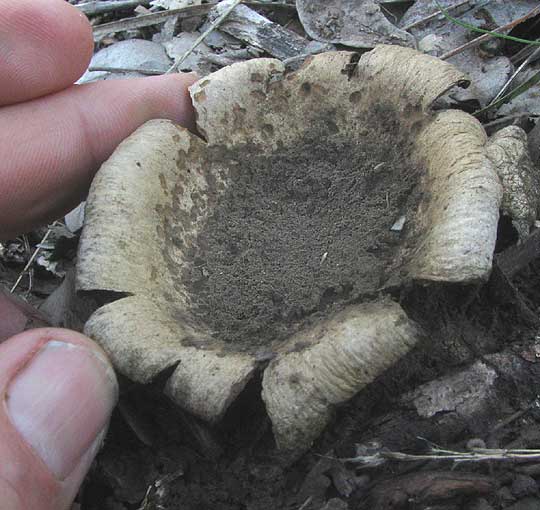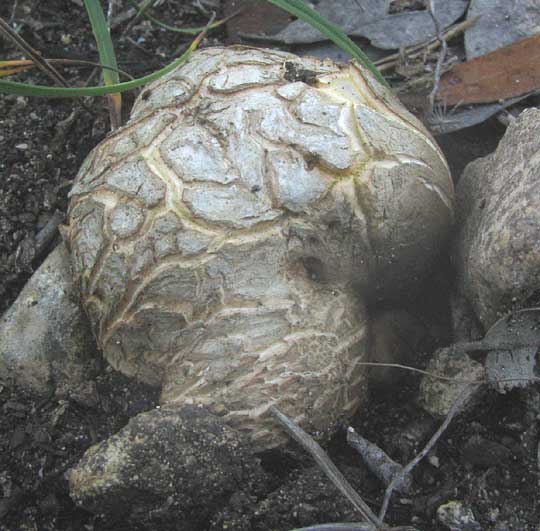Excerpts from Jim Conrad's
Naturalist Newsletter
from the December 1, 2013 Newsletter issued from the Frio Canyon Nature Education Center in the valley of the Dry Frio River in northern Uvalde County, southwestern Texas, on the southern border of the Edwards Plateau; elevation ~1750m (~5750 ft); N29.62°, W99.86°; USA
TEXAS EARTHBALL
Along a steep, rocky trail through the scrubby Ashe Junipers and Texas Liveoaks on our limestone hill, a brown, leathery, bowl-like, flower-shaped affair about two inches wide
(5cm) turned up, seeming to contain something like mud or wet ashes in its bowl. That's it below:

It was the remains of some kind of puffball-like fungus, the ashy stuff in its center being what was left of a spore mass, the main body of which already had been blown or washed away. With such fragmentary remains I didn't figure I'd ever be able to identify the fungus species, but right after taking the above picture I noticed what was apparently an immature fungus of the same kind emerging between rocks just a few inches away, shown below:

We've seen something like this before. Back in Oregon we found an "earthball" of the genus Scleroderma. You can see how similar it is at https://www.backyardnature.net/n/x/earthbll.htm.
Normally to be sure about an earthball's identification you need to see the spores with a microscope. We have a microscope, and you can see our earthball's spores below:

The three larger dark items are spores. Though at this very high magnification the picture is fuzzy, at least we can see that spines on the spores grow very close together and are more or less of the same height. That's important, since the spines on spores of many earthball species are more widely spaced and/or display very unequal heights. These spore features were critical when using Michael Kuo's identification key for the genus Scleroderma at http://www.mushroomexpert.com/scleroderma.html.
Using that key, matching our earthball with pictures on the Internet, reading about general habitat preferences, and comparing our spores with spore drawings on Michael Kuo's page, my best bet is that we have the Texas Earthball, SCLERODERMA TEXENSE.
Despite the "texense" in the binomial, apparently Texas Earthballs are widely distributed, being mostly tropical and regularly found in southern Mexico, as well as Spain and other countries.
Otherwise not much is known about the species, though there seems to be general agreement that none of the earthballs -- in contrast to some of the puffballs -- should be eaten. Some earthballs are known to have caused severe illness.